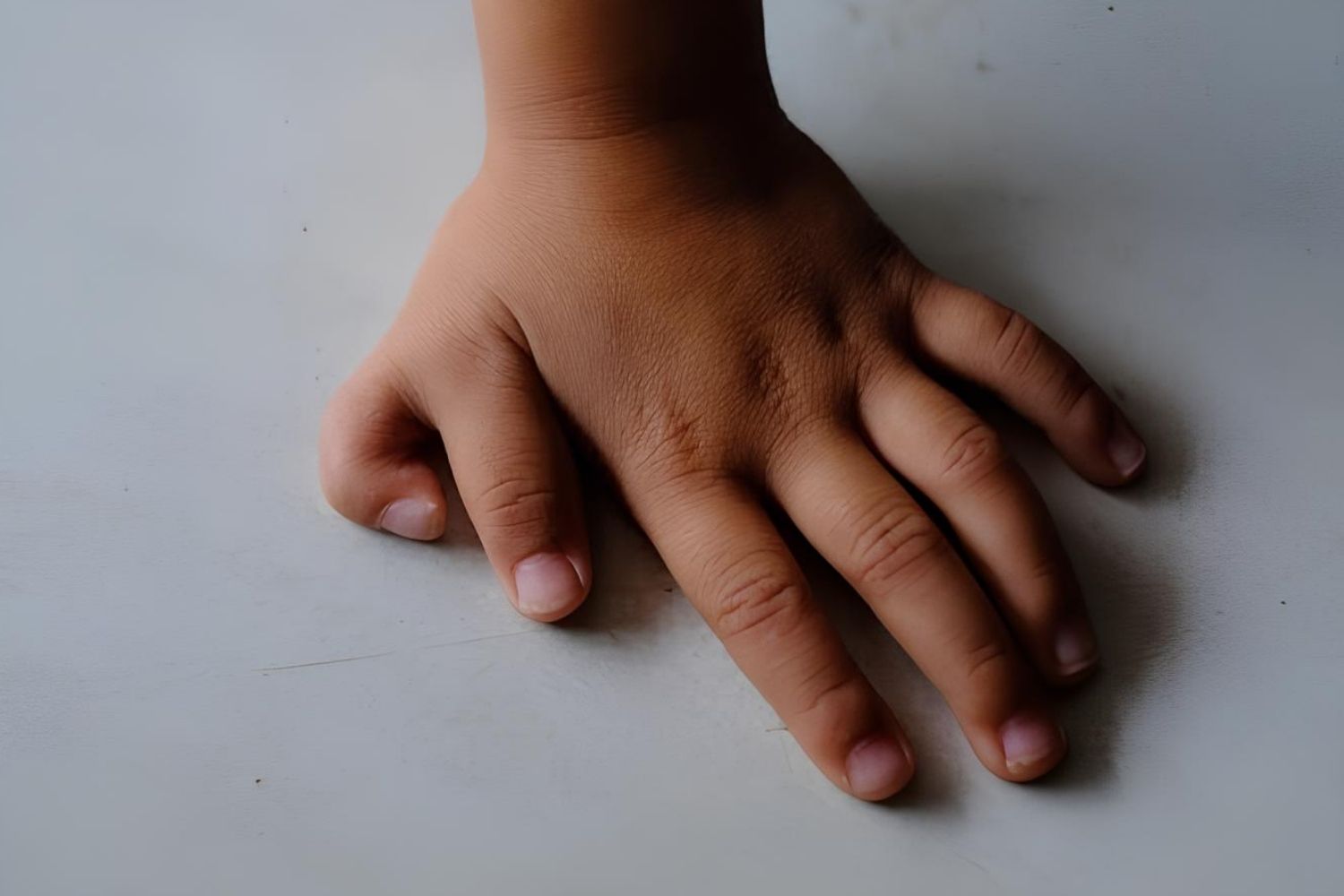
Cryptomicrotia Brachydactyly Excess Fingers might sound like a mouthful, but it's a fascinating topic! This rare genetic condition combines three distinct traits: small ears (cryptomicrotia), short fingers (brachydactyly), and extra fingers (polydactyly). Imagine having a unique combination of features that make you stand out in a crowd. Cryptomicrotia affects the outer ear's size and shape, while brachydactyly results in shorter-than-average fingers. Adding to the mix, polydactyly means having more than the usual number of fingers. These traits can occur separately or together, creating a unique genetic mosaic. Curious about how these features come together? Let's dive into 25 intriguing facts about this condition!
Key Takeaways:
- Cryptomicrotia, Brachydactyly, and Polydactyly are rare conditions affecting the ears, fingers, and toes. Genetics play a significant role, and early intervention and multidisciplinary care are crucial for optimal outcomes.
- Surgical intervention, hearing aids, and physical therapy can help improve function and appearance for individuals with these conditions. Genetic testing and counseling are important for families with a history of these conditions.
What is Cryptomicrotia?
Cryptomicrotia is a rare congenital condition affecting the ears. It involves underdeveloped or missing external ear structures. This can impact hearing and appearance.
- Cryptomicrotia is a combination of two terms: "crypto" meaning hidden and "microtia" meaning small ear.
- This condition often results in a small, malformed ear or complete absence of the external ear.
- It can occur on one or both sides of the head, though unilateral cases are more common.
- Cryptomicrotia affects approximately 1 in 6,000 to 12,000 live births.
- The exact cause is unknown, but genetic and environmental factors may play a role.
Understanding Brachydactyly
Brachydactyly refers to short fingers or toes due to abnormal bone development. It can be an isolated condition or part of a syndrome.
- Brachydactyly comes from Greek words meaning "short" and "finger."
- This condition can affect any finger or toe, leading to a noticeable difference in length.
- Brachydactyly is often inherited in an autosomal dominant pattern.
- There are several types of brachydactyly, classified based on which bones are shortened.
- It can be associated with other conditions like heart defects or growth hormone deficiencies.
Excess Fingers: Polydactyly
Polydactyly is a condition where a person has more than the usual number of fingers or toes. It can vary in form and function.
- Polydactyly means "many fingers" in Greek.
- This condition can result in fully formed extra digits or small, non-functional nubs.
- Polydactyly can occur on hands, feet, or both.
- It is one of the most common congenital hand anomalies, occurring in about 1 in 500 to 1,000 live births.
- Extra digits can be surgically removed if they interfere with function or cause discomfort.
Genetic Factors
Genetics play a significant role in these conditions. Understanding the genetic basis can help in diagnosis and management.
- Genetic mutations are often responsible for conditions like cryptomicrotia, brachydactyly, and polydactyly.
- These mutations can be inherited from parents or occur spontaneously.
- Genetic testing can help identify specific mutations and guide treatment options.
- Family history is an important factor in assessing the risk of these conditions.
- Some syndromes involving these conditions are linked to specific genes, like the HOXD13 gene for brachydactyly.
Treatment and Management
Managing these conditions often involves a combination of medical, surgical, and supportive approaches.
- Surgical intervention can improve function and appearance in cases of cryptomicrotia and polydactyly.
- Hearing aids or implants may be necessary for those with hearing loss due to cryptomicrotia.
- Physical therapy can help improve hand function in individuals with brachydactyly.
- Genetic counseling is recommended for families with a history of these conditions.
- Early intervention and multidisciplinary care are crucial for optimal outcomes.
Final Thoughts on Cryptomicrotia Brachydactyly Excess Fingers
Cryptomicrotia Brachydactyly Excess Fingers is a rare condition that combines unique features like small ears, short fingers, and extra digits. Understanding these traits helps in recognizing and diagnosing this condition early. While it might seem daunting, awareness and knowledge can make a big difference for those affected.
Medical advancements continue to improve the quality of life for individuals with this condition. Early intervention and supportive care are crucial. If you or someone you know shows signs of Cryptomicrotia Brachydactyly Excess Fingers, consulting a healthcare professional is essential.
Remember, every rare condition brings its own set of challenges and strengths. Embracing these differences fosters a more inclusive and understanding world. Keep learning and stay informed to support those with unique conditions like Cryptomicrotia Brachydactyly Excess Fingers.
Frequently Asked Questions
Was this page helpful?
Our commitment to delivering trustworthy and engaging content is at the heart of what we do. Each fact on our site is contributed by real users like you, bringing a wealth of diverse insights and information. To ensure the highest standards of accuracy and reliability, our dedicated editors meticulously review each submission. This process guarantees that the facts we share are not only fascinating but also credible. Trust in our commitment to quality and authenticity as you explore and learn with us.
